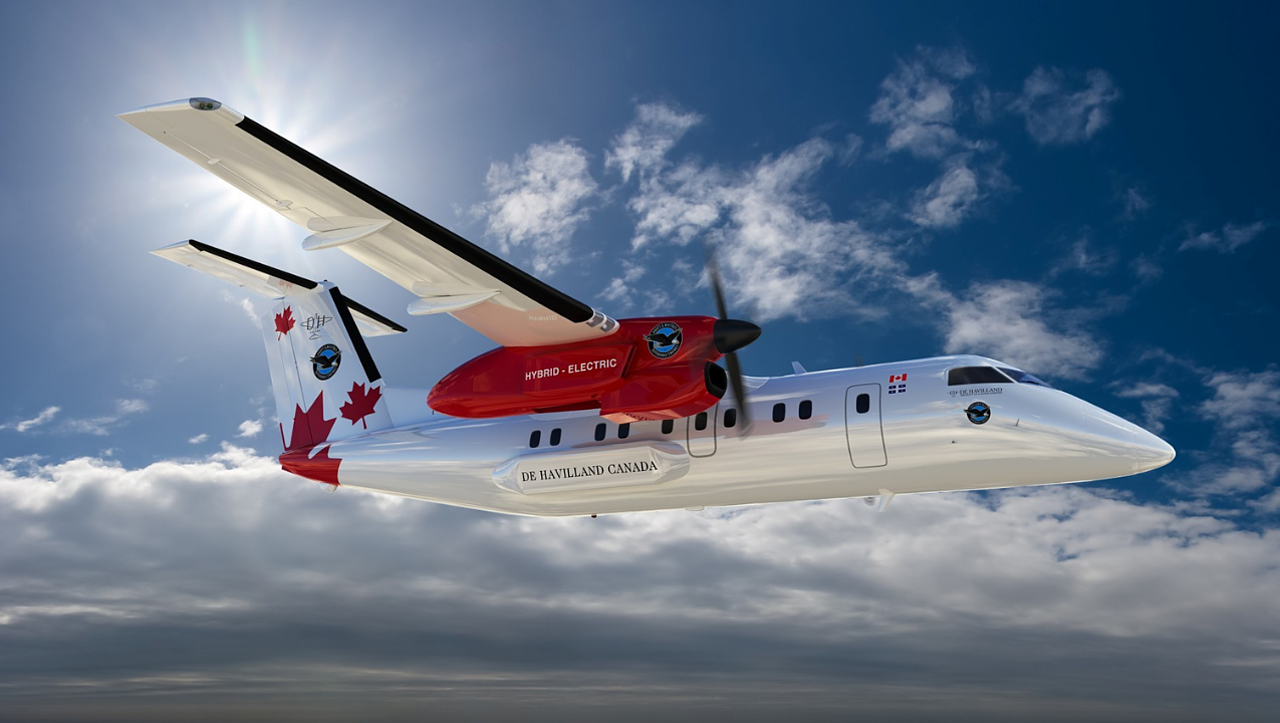
Hybrid-electric propulsion and hydrogen fuel cell technologies are receiving strong interest as a future source of propulsion in the aviation sector. An important research programme that will advance hybrid-electric propulsion technology, culminating with a flight demonstrator programme was recently announced along with a $163 million CAD investment by Pratt & Whitney Canada (P&WC), a business unit of Pratt & Whitney, a division of Raytheon Technologies. The research effort is being supported by the Government of Canada and Quebec.
De Havilland Aircraft of Canada (De Havilland Canada) became the first Regional Transport Aircraft (RTA) manufacturer to support the development of hybrid-electric propulsion technology by providing a Dash 8-100 turboprop for use as the flight demonstrator for this P&WC-led programme.
Ground testing of the hybrid-electric propulsion technology starts in 2022 with the Dash 8-100 demonstrator to make its maiden flight in 2024.
“With a long-time commitment to sustainability and as Canada's top aerospace investor in research & development, having invested $500 million CAD annually, we are driving economic growth, innovation and workforce expertise to benefit the environment. Hybrid-electric technology has an important role to play in enabling the next step-change in efficiency for aircraft engines, and we are uniquely positioned to demonstrate this potential,” said Maria Della Posta, President, Pratt & Whitney Canada.
Sustainable aviation
Hybrid-electric propulsion technology is considered as one of the key pillars for sustainable aviation in the future and is receiving significant investments from aerospace firms. Collins Aerospace, which is also a part of Raytheon Technologies will provide P&WC with an advanced electric motor and controller for the programme.
The new hybrid-electric propulsion technology being considered for modern RTAs and the demonstrator aircraft could deliver a 30% reduction in fuel burn and CO2 emissions as compared to present generation turboprop powered RTAs. This will be accomplished by delivering significant improvements in aircraft efficiency through optimising engine performance across different phases of flight.
Turboprop powered RTAs are popular in India with Air India Express and IndiGo operating the ATR-72 and SpiceJet operating the De Havilland Canada Dash 8-100 (earlier known as Bombardier Q400). Future production variant RTAs with hybrid-electric propulsion technology could well be operating with Indian airlines before the end of the decade.

Hydrogen fuel cells raise the bar for transportation
Hydrogen fuel cells appear as a more promising alternative for use in hybrid or all-electric powered small aircrafts compared to use of batteries to power aircraft engines. One of the firms carrying out advanced work on this future technology is Rolls-Royce, which says its research has shown that fuel cells can offer greater energy storage and faster refuelling, giving them the potential to substitute electric batteries.
According to Dr Peter Riegger, Vice President, Rolls-Royce PowerLab, the greatest benefit of hydrogen fuel cells is that they run on regeneratively produced hydrogen, thereby fully eliminating polluting and climate-damaging gas emissions.
Water is the only exhaust emission from fuel cells, which use a chemical reaction between hydrogen and oxygen to generate electrical current. In addition to having very high efficiency levels, when generating electricity from hydrogen and oxygen, fuel cells also generate low-noise and are vibration-free and low on maintenance.
Fuel cells have already been tested on a commercial type aircraft. However, at the present time, the challenge of storing hydrogen and the limited power density of fuel cells do not make them suited for large aircraft on long-range flights but better suited to power smaller aircraft.
In June, Rolls-Royce's Power Systems division announced that it was making progress with a 250 kW hydrogen fuel cell demonstrator at its Friedrichshafen plant in Germany, with installation of the complex hydrogen infrastructure and the container completed.
“Fuel cells will form an elementary part of our product portfolio for sustainable solutions,” said Andreas Schell, CEO, Rolls-Royce Power Systems. “We firmly believe that fuel cell technology is set to make a huge contribution to a successful energy turnaround. That's why Rolls-Royce sees it as its mission to assume a pioneering role in fuel cell applications.”
Rolls-Royce has used four low-temperature polymer electrolyte membrane (PEM) fuel cell modules from the automotive sector for the energy systems. The test results thereof have been encouraging. “Power flexing characteristics and performance are excellent, and as expected there are no vibrations or no loud noises,” said Dr Riegger.
Rolls-Royce has stated that it will soon begin tests following connection of all four demo modules together in the container and hooking up the batteries and power circuit. The 250 kW hydrogen fuel cell demonstrator is slated for commissioning in the second half of 2021.
Hydrogen fuel can also be used as a direct fuel to power aircraft engines but will require modified combustion chambers within gas turbine engines. For such use, Liquid Hydrogen (LH2) will be needed, which has to be stored at or below -253° C (-487° F) in cryogenic fuel tanks.
This will require substantial investments to be made for its storage and use by airlines, airports, and aircraft and engine manufacturers and hence is likely to be viable only around 2050.